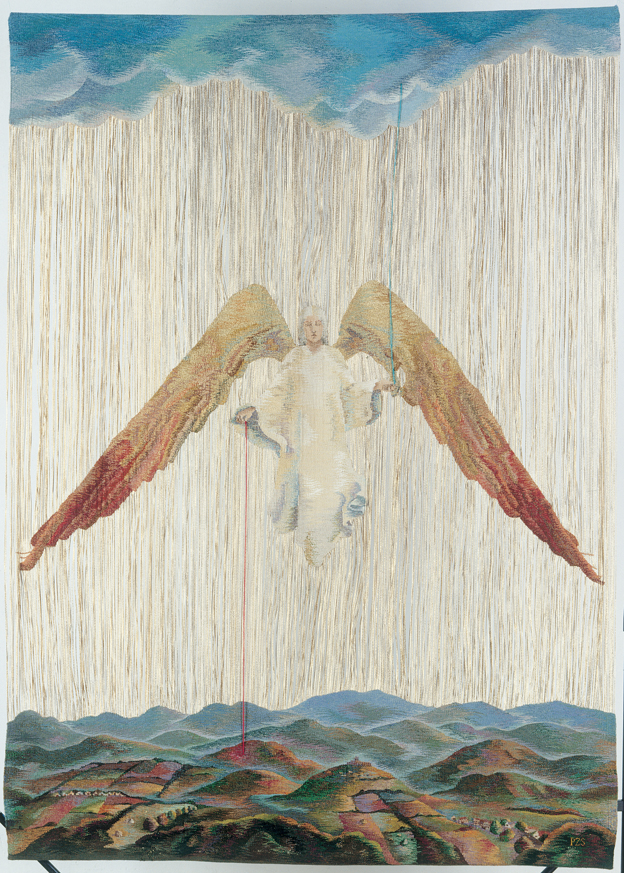
Commonly called the “grand dame” of modern Hungarian textile art, Zsuzsa Péreli has earned the epithet with an oeuvre which over the decades revitalized this means of self-expression, a form that boasts a venerable tradition in her country’s art. The development of Péreli’s inimitable, unmistakable art has been continuous, its trajectory unbroken. Since as early as the beginning of the 1980s, her original vision and her pioneering work, which sought to reform, as well as to find recognition for, the genre, have been repeatedly acknowledged with professional honours and awards. In 1980 she won the main prize of the Wall and Space Textile Biennial, and its special prize in 1990; in 1981 she was awarded the Munkácsy Prize, and in 1998 the For Hungarian Art Prize; in 2008 she received the Artist of Merit of the Republic of Hungary Award; and in 1994 she was elected a member of the Széchenyi Academy of Literature and Arts.
Zsuzsa Péreli’s early work seeks to evoke the mood of an early-20th century milieu by transposing yellowed, tattered photographs into an artistic medium. She went on to apply objects to the tapestries, which were somehow typical of their age and contributed essentially to the meaning of the works, while also functioning as atmospheric elements. These works opened new directions for the genre, investing the tapestry with the standing of an art object. As in the case of many more artists, the political transition brought a fundamental turn in Péreli’s work. The elements and experiences of physical reality gave way to a different creative intention, one that sought to reflect a different world view. An essential aspect of the latter is a departure from the everyday towards the sublime, towards sentiments that can be experienced in the spiritual sphere. The works of this period translate these feelings into the formal idiom of textile, and are dominated by icon-inspired representations of the Madonna, and other emotionally charged pieces of a more solemn mood, with more abstract subjects and messages. Aequilibrium, a large (220x160 cm) tapestry made in 2000–2001 is one of the fist, and still one of the most beautiful, pieces in this series, a compelling demonstration of the artist’s unique sense of calling. The very arrangement of the composition answers to the appeal of the titular equilibrium, with a formal harmony of vertical and horizontal structures. The very definite horizontality of the dynamic blue sky, which directs the gaze, and of the hilly land that occupies the lower section of the work, is balanced by the perpendicular, brownish woollen threads that suggest a region between the heavens and the earth. It is in this carefully considered and visually harmonic frame of a landscape that the vehicle of the work’s intellectual content appears: an angel with vast wings who hovers between heaven and earth, linking the material world with the transcendental, the physical with the spiritual. In addition to its central position, the angel’s role of establishing a connection is further emphasized by a straight blue and red ray or line that connects its hands with the sky and the earth, respectively. According to the symbolism of colours, blue represents the intellect, a spiritual, superhuman, heavenly force, while red signifies life and mortality, worldly existence. From this perspective, Aequilibrium has multiple layers, admits different approaches and interpretations. It is probably fair to assume that Péreli intended this impressive and spectacular composition to be a reminder in this overly material-minded world that more is necessary for a complete life and the much-treasured self-realization than earthly goods and pleasures: while maintaining moderation and a balance, we must fully embrace the possibilities that a spiritual life offers.
(Published: Almási, Tibor: "Péreli Zsuzsa: Aequilibrium". In: Jog, állam, politika, year IV, 1/2012. pp. 163-164.)